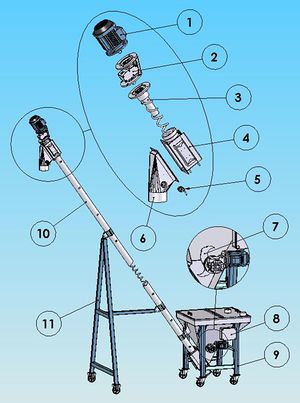Difference between revisions of "Spiral Rigid Conveyors"
Jump to navigation
Jump to search
(Created page with "Category:Conveying{{Knoppen}} <noinclude><!------------------------------------------------ * READ THIS FIRST * Only edit this page if you can improve the content. * Imprope...") |
|||
| (One intermediate revision by one other user not shown) | |||
| Line 7: | Line 7: | ||
* Please start editing this page after the /noinclude | * Please start editing this page after the /noinclude | ||
* -------------------------------------------------></noinclude> | * -------------------------------------------------></noinclude> | ||
[[File:SPIRAL RIGID CONVEYORS.jpg|thumb|right|Spiral Rigid Conveyors]] | |||
'''Spiral Rigid Conveyors''', also generically called [[Mechanical Conveyors]] are different from | |||
[[Flexible Screw Conveyors]] because the rigid conveyor tube is made of carbon steel or stainless steel instead of nylon. | |||
The rotary spiral, like the structural work for loading and unloading the materials, is made of carbon steel or stainless steel depending on the type of rigid tube being used. | |||
Though the tube is rigid, the spiral is like the flexible type that facilitates adaptation to the granule size of the material being conveyed while faithfully following the tube geometry in cases where there are pressed curves. | |||
Latest revision as of 20:54, 27 August 2012
Spiral Rigid Conveyors, also generically called Mechanical Conveyors are different from Flexible Screw Conveyors because the rigid conveyor tube is made of carbon steel or stainless steel instead of nylon. The rotary spiral, like the structural work for loading and unloading the materials, is made of carbon steel or stainless steel depending on the type of rigid tube being used. Though the tube is rigid, the spiral is like the flexible type that facilitates adaptation to the granule size of the material being conveyed while faithfully following the tube geometry in cases where there are pressed curves.
